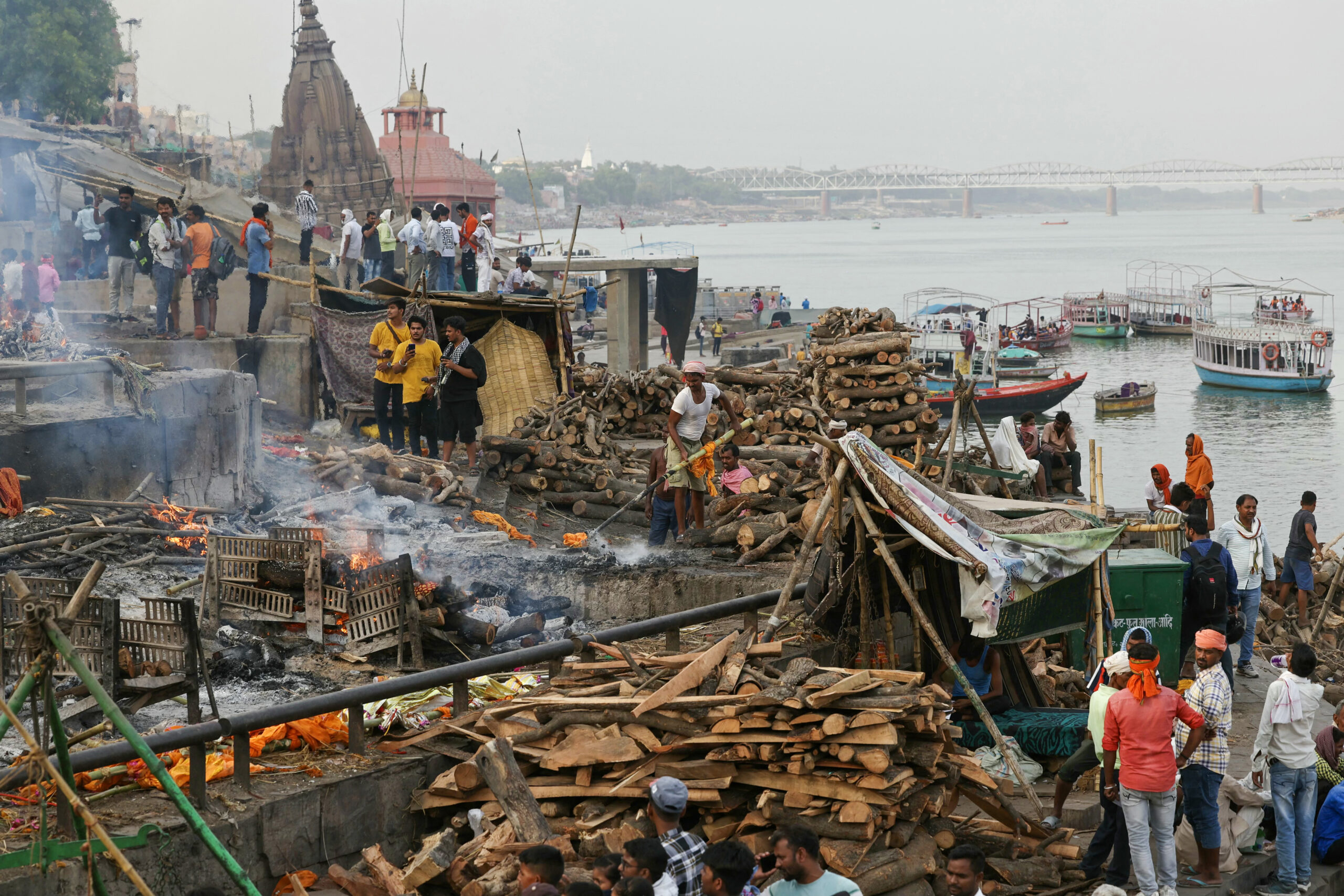
In this photograph taken on June 16, 2024, a cremator (C) of the Dom community cleans a pyre after funeral rites, at Harishchandra Ghat along the banks of river Ganges in Varanasi. Agence France-Presse
VARANASI, India — Some stay only days, others wait decades, but the crowds of elderly Indian Hindu devotees are calm and confident that their one-way pilgrimage to death will deliver everlasting peace.
Smoldering funeral pyres line the Ganges river in India’s holy city of Varanasi, where thousands of Hindu faithful come each year to spend their final days.
Dying beside the banks of the Ganges guarantees they will be cremated there and their ashes scattered in the water along the river’s steps or “ghats”, which Hindus believe ensures liberation from the cycle of rebirth.
READ: India’s elderly await death, seek salvation in holy city
Badri Prasad Agarwal, 92, travelled for days over 1,000 kilometers (620 miles) from the far western state of Rajasthan, happy to wait in peace knowing he was in the right place to die.
“This is god’s own land,” the 92-year-old said, resting at the near-end of a long and hard life.
‘In god’s home’
He says his god has told him he has five more months to live.
He is content to spend them in a hospice that serves those coming to spend their final days in quiet contemplation of their past and the future they believe will come.
“I talk with god every day,” Agarwal said. “Soon I will be at peace, in god’s home.”
READ: India’s holy Ganges river gives up its coronavirus dead
He has found space to live in a charity guesthouse called the Mumukshu Bhawan hospice — “House of those Seeking Salvation” — one of scores of “salvation homes” in the city.
The centre has 40 rooms serving some of the thousands of people who come to Varanasi to die.
Agarwal is pleased to be there, as it is one of the closest to the river, just a minute’s walk away.
In this photograph taken on June 16, 2024, boats ferry past burning funeral pyres at Harishchandra Ghat, along the banks of river Ganges in Varanasi. Agence France-Presse
There the cremation fires blaze nonstop, as they have done since time immemorial.
For Hindus, the northern city of Varanasi, also known as Benares, is one of the holiest places in the world.
It is the city of Lord Shiva, the god of destruction, who Hindus say must destroy before he can recreate. People in search of “moksha”, or liberation, have travelled there for centuries.
‘Attain salvation’
At the salvation hospice, some come alone and are dependent on charity. Some are married couples.
Others use their life savings to pay their way, or bring along relatives to care for them.
There are medical facilities for the sick but in this holy city, death is not something to mourn.
Instead, it is considered a blessing, for the understanding of the elders is that their souls will attain freedom from the cycle of life and death.
Nathi Bai, 72, moved to Varanasi two years ago, looking forward to her time at the Manikarnika Ghat cremation site.
“I want to be cremated… for my soul to be at peace, and my ashes immersed in the Ganges,” she said.
She has watched the celebrations of those who have died in their fervent belief that salvation lies ahead.
“When people are taken for cremation, it is like you are taken on a throne like a god,” she said.
“There’s so much respect and everything is done so well.”
Gulab Bai came with her husband over 30 years ago. He died after seven years, and while her now grown children come to visit, she is ready to go.
The 91-year-old, dressed in a saffron sari, the sacred colour of Hinduism, waits for her turn in serenity.
“Dying and being cremated here breaks the endless cycle of life and death,” she said. “Then I will attain salvation.”